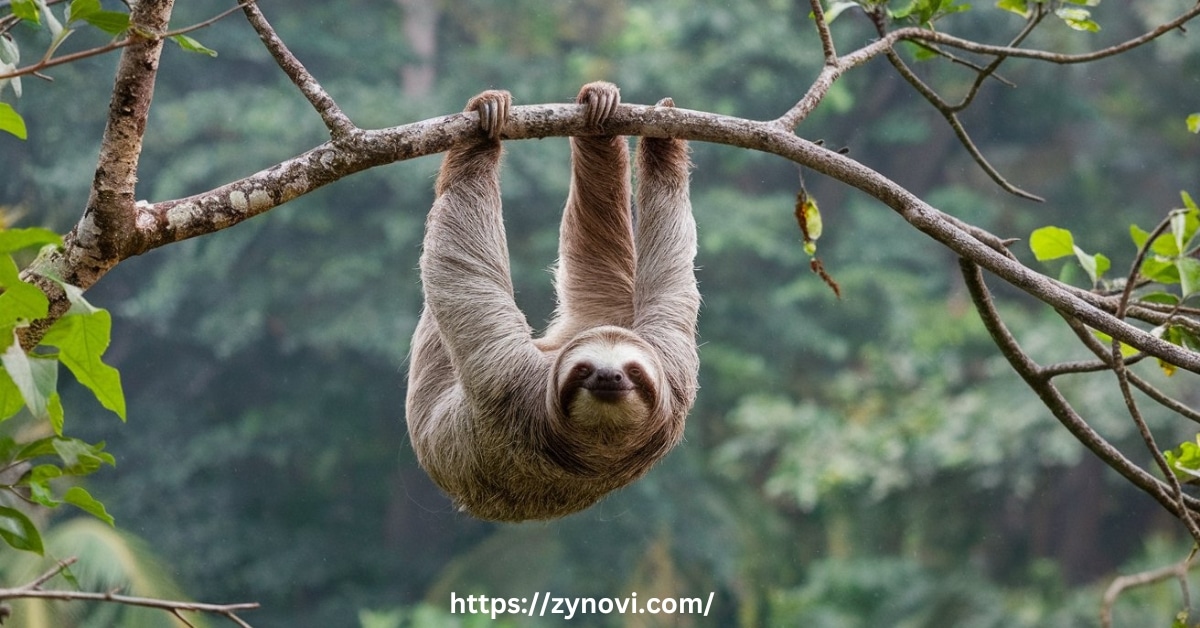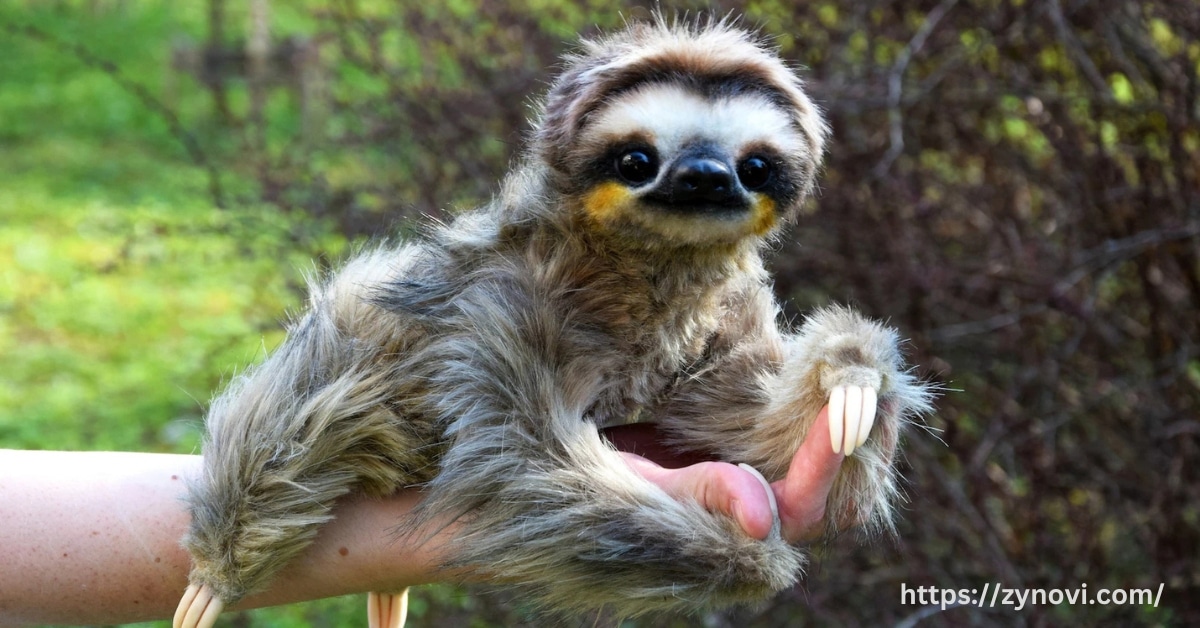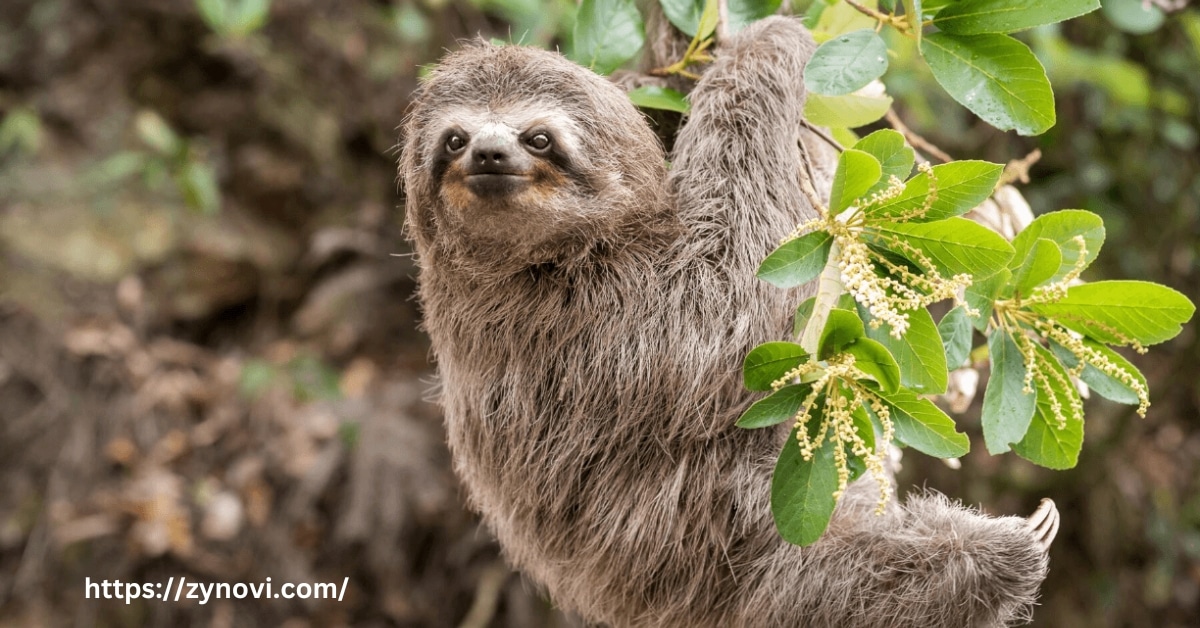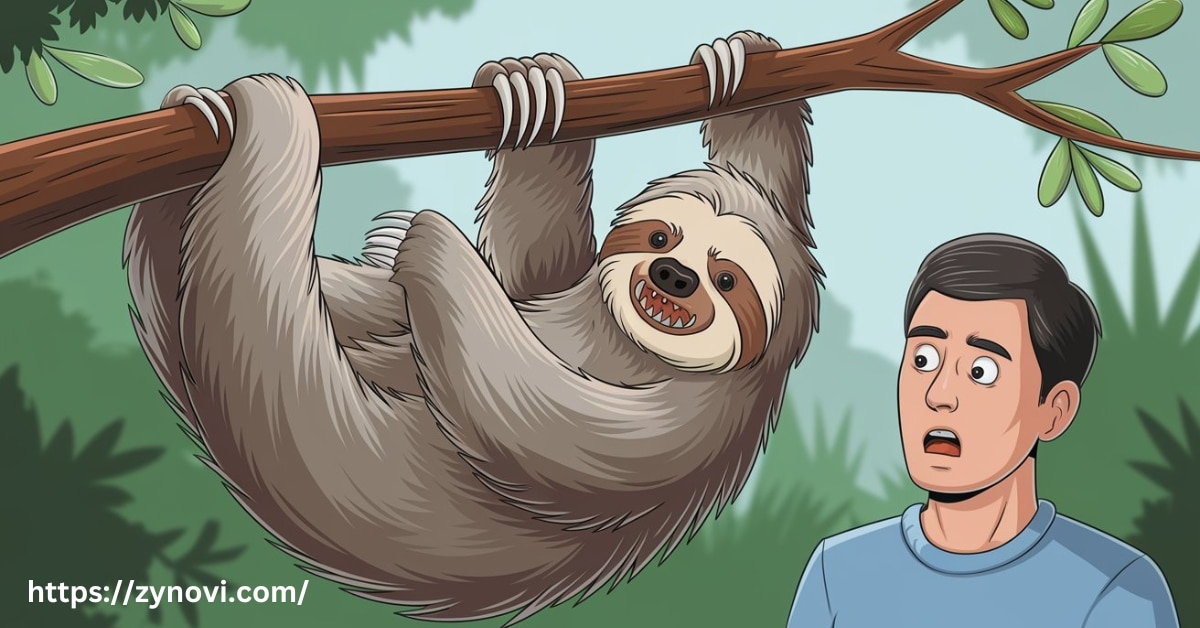Do Sloths Attack Humans? While sloths are known for their peaceful and slow nature, rare instances of defensive behavior might surprise you. Understanding their instincts can help you safely admire these fascinating creatures from a respectful distance.
You’ve probably seen those adorable sloths hanging lazily from trees and wondered. In this article, we’ll uncover the truth behind sloth interactions with humans, revealing the rare circumstances when they might react defensively.
Get ready to uncover the facts and clear up the myths surrounding these fascinating creatures! Keep reading to discover everything you need to know.
Understanding Sloths
What Are Sloths?
Sloths are arboreal mammals native to the rainforests of Central America and South America. They belong to two primary groups:
- Two-toed sloths (Choloepus): Known for their larger size and a more generalized diet.
- Three-toed sloths (Bradypus): Smaller, with a distinct facial pattern that gives them a “smiling” appearance.
Sloths are characterized by their slow metabolism, which allows them to conserve energy, and their symbiotic relationship with algae, which grows on their fur, providing camouflage.
Key Facts About Sloths:
| Species | Habitat Range | Conservation Status | Unique Features |
|---|---|---|---|
| Brown-throated sloth | Central & South America | Least Concern | Adapts well to various environments |
| Pale-throated sloth | Northern South America | Least Concern | Prefers dense forests |
| Pygmy three-toed sloth | Isla Escudo, Panama | Critically Endangered | Smallest and rarest sloth species |
Do Sloths Attack Humans?

Typical Behavior of Sloths
Sloths are gentle and solitary creatures, spending most of their time in trees. They move slowly and avoid conflict, relying on their camouflage and stillness to evade predators. However, despite their peaceful nature, sloths can exhibit defensive behavior when threatened.
“A sloth’s first instinct is to avoid conflict, but when cornered, they won’t hesitate to defend themselves.”
Defensive Behaviors When Threatened
Sloths may be slow moving, but they possess effective self-defense mechanisms to protect themselves when threatened.
- Sharp Claws: Sloths have long, curved claws that can cause deep and painful scratches if they feel cornered. These claws are primarily used for climbing but become formidable weapons during defensive situations.
- Strong Grip: A sloth’s grip is remarkably powerful, allowing them to cling tightly to branches. This grip can also be used to hold onto a potential threat, making it difficult for the attacker to escape.
- Vocalizations: Though typically silent, some sloth species produce hissing or sharp vocal sounds to intimidate predators or deter perceived threats. This unexpected behavior can surprise and dissuade aggressors.
Rare Cases of Aggression
Sloths are known for their calm and gentle nature, making aggression an unusual trait for them. However, in rare instances, sloths may defend themselves if they feel cornered, stressed, or threatened.
Such cases typically arise when humans disrupt their natural habitat or handle them improperly. When provoked, sloths may lash out using their sharp claws or strong grip as a means of self-defense.
While these occurrences are uncommon, they highlight the importance of respecting sloths’ boundaries and ensuring that any interaction with them is done responsibly and ethically.
How Dangerous Are Sloths Attack for Humans?

Can Sloths Attack by Claws?
Sloths’ claws serve as vital tools for climbing and foraging, but they can also become dangerous defensive weapons in certain situations.
- Cause Deep Wounds: Sloth claws are long, sharp, and curved, capable of inflicting deep and severe wounds if they swipe in self-defense. These injuries can be painful and may require medical attention.
- Lead to Infections: The fur of sloths often harbors bacteria, fungi, and parasites. If a scratch breaks the skin, it can introduce harmful microorganisms, potentially leading to serious infections if not promptly and properly treated.
Understanding Sloth Bites
Although sloths rarely bite, their teeth are strong enough to cause injuries. It’s a common myth that sloth bites are venomous, but scientific studies confirm that sloths are not venomous.
Health Risks from Sloth Interactions:
| Risk | Cause | Prevention/Treatment |
|---|---|---|
| Infections | Bacteria in sloth fur | Clean wounds thoroughly, seek medical care |
| Allergic Reactions | Exposure to parasites in their fur | Avoid handling wild sloths |
| Physical Injuries | Claws and teeth during defensive actions | Keep a safe distance |
How to Avoid Sloth Attacks

Respecting Wildlife Boundaries
Respecting wildlife is essential for both safety and conservation, especially when observing sloths in their natural habitat.
- Maintain Distance: Getting too close to sloths can make them feel cornered or threatened. Keeping a safe distance allows them to remain relaxed and undisturbed.
- Avoid Touching or Handling: Physical contact can stress sloths and may provoke defensive reactions like scratching or vocalizing. It also risks transferring harmful bacteria to or from the animal.
- Use Quiet Observation: Loud noises or sudden movements can startle sloths, disrupting their behavior and possibly causing them distress. Observing calmly ensures a more authentic wildlife experience.
Tips for Safe Observation
To ensure a safe and enjoyable wildlife experience:
- Maintain a Safe Distance: Always stay several feet away from sloths. For close-up views, use binoculars or a camera with a zoom lens to avoid disturbing them.
- Avoid Touching or Handling: Physical contact can stress sloths, provoke defensive behaviors, and increase the risk of injury or illness for both humans and animals.
- Follow Local Guidelines: When visiting wildlife sanctuaries or national parks, adhere to all posted rules and instructions from guides to ensure the safety of both visitors and animals.
Ethical Wildlife Tourism
Engaging in ethical wildlife tourism helps protect sloths while ensuring a responsible experience:
- Support Reputable Sanctuaries: Choose wildlife sanctuaries and rescue centers with proven dedication to the care and well-being of sloths, emphasizing conservation and rehabilitation.
- Avoid Direct Interaction: Attractions that allow holding, petting, or feeding sloths can cause significant stress and disrupt their natural behavior. Prioritize viewing them in environments where their autonomy is respected.
- Promote Education: Opt for tours and centers that educate visitors about sloth behavior, habitat conservation, and the importance of ethical tourism practices.
FAQs
Can Sloths Be Kept as Pets?
No, keeping sloths as pets is not recommended. Sloths have specific needs, including a tropical environment, a specialized diet, and the freedom to climb and roam. Additionally, many countries have laws prohibiting the possession of exotic wildlife.
What Should You Do If a Sloth Approaches You?
If a sloth comes near, remain calm and still. Avoid making sudden movements or noises that might startle the animal. Allow the sloth to move away on its own.
Are Sloth Bites Venomous?
No, sloth bites are not venomous. However, any bite or scratch should be cleaned and treated to prevent infection.
Do Sloths Attack Other Animals?
Sloths rarely engage in aggressive behavior toward other animals. Their lethargic lifestyle and herbivorous diet make them unlikely to attack unless directly threatened.
Where Can You Safely See Sloths in the Wild?
You can observe sloths in their natural habitat at locations like:
- Costa Rica: Manuel Antonio National Park.
- Panama: Soberanía National Park.
- Brazil: Amazon Rainforest.
Conclusion: Do Sloths Attack Humans?
In summary, while sloths are not naturally aggressive, they are equipped with self-defense mechanisms such as sharp claws and strong grips. Attacks on humans are extremely rare and usually result from habitat disruption or improper handling.
By respecting sloths’ habitats, following ethical wildlife tourism practices, and maintaining a safe distance, humans can enjoy observing these incredible creatures without causing harm. Remember, the best way to protect sloths is to support wildlife conservation efforts and prioritize their well-being over personal interaction.










